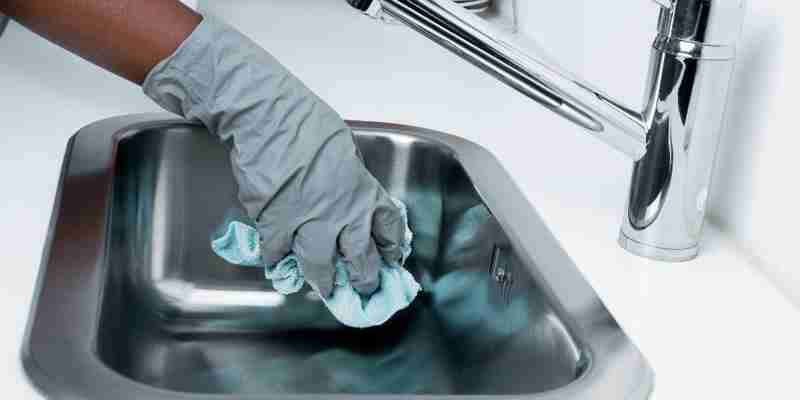With many people prioritizing clean and disinfected environments, it may be a good time to give your kitchen some well-deserved attention.

While the Centers for Disease Control and Prevention (CDC) notes transmission of the novel coronavirus to persons from surfaces has not been documented, cleaning and disinfecting surfaces remains a best practice for preventing the spread of viral respiratory illnesses, including COVID-19.
If you are looking to clean and disinfect the heart of your home, consider paying special attention to the following frequently touched, and often overlooked, surfaces.
Hard Surfaces:
For greatest success, start by wearing disposable gloves. Clean surfaces using soap and water. Then, use an appropriate EPA-registered household disinfectant, following label instructions for safe and effective use.
If appropriate for the surface, a diluted household bleach solution may be used to disinfect instead. Follow label instructions, mixing a solution of five tablespoons bleach per gallon of water or 4 teaspoons bleach per quart of water—leaving the solution on the surface for at least one minute. The best practice is to mix bleach solution daily.
Alternatively, quick use of an alcohol-based spray or wipe will do the trick. Read the label to make sure it is a 70% alcohol solution, follow label instructions and air dry.
1) Counters, tables, hard-back chairs, doorknobs, cupboard handles and light switches. While these high touch surfaces may appear clean to the naked eye, consider whether it has been a while since they were properly disinfected.
2) Faucet and sink. If your sink is the typical catch-all for leftover food scraps and juices, soiled dishes and handwashing residue, include it in your cleaning and disinfecting routine. Wash, rinse and disinfect.
3) Kitchen tools and utensils. Keep in mind that these items touch food, so use food safe methods to clean and disinfect.
Soft Surfaces:
4) Dishtowels, washcloths and sponges. According to an NSF International household germ study, dishtowels and sponges are the germiest item in your kitchen. Toss dishtowels in the wash and dry them completely on a high heat setting. Repeat regularly. Even after two or three uses, your sponge may be teeming with bacteria. Microwave damp sponges for one minute or put them in the dishwasher with a drying cycle. The USDA found this kills over 99 percent of bacteria, yeasts and molds. Replace sponges regularly.
5) Reusable grocery and lunch bags. For wipeable lunch bags, consider using a 70% alcohol-based spray or wipe. When your store will again accept reusable grocery bags, wash them regularly in the same way you would your dishtowels and washcloths.
6) Drapes and rugs. Do you open and close your drapes regularly? Do you have little ones crawling around on your floors? If these items are made of a washable material, toss them in the wash. Otherwise, use an appropriate EPA-registered household disinfectant, following label instructions for safe and effective use.
Electronics and Appliances:
7) Large and small appliances. Handles and buttons on these pieces of equipment can harbor unseen germs. For parts that do not touch food, you can clean and disinfect as you would any other hard surface. For parts that touch food, use food safe methods as you would any other kitchen tool or utensil.
8) Phones and tablets used for recipe prep. Consider putting a wipeable cover on electronics, and follow manufacturer’s instructions for cleaning and disinfecting. Using a 70% alcohol-based wipe works well with these items.












